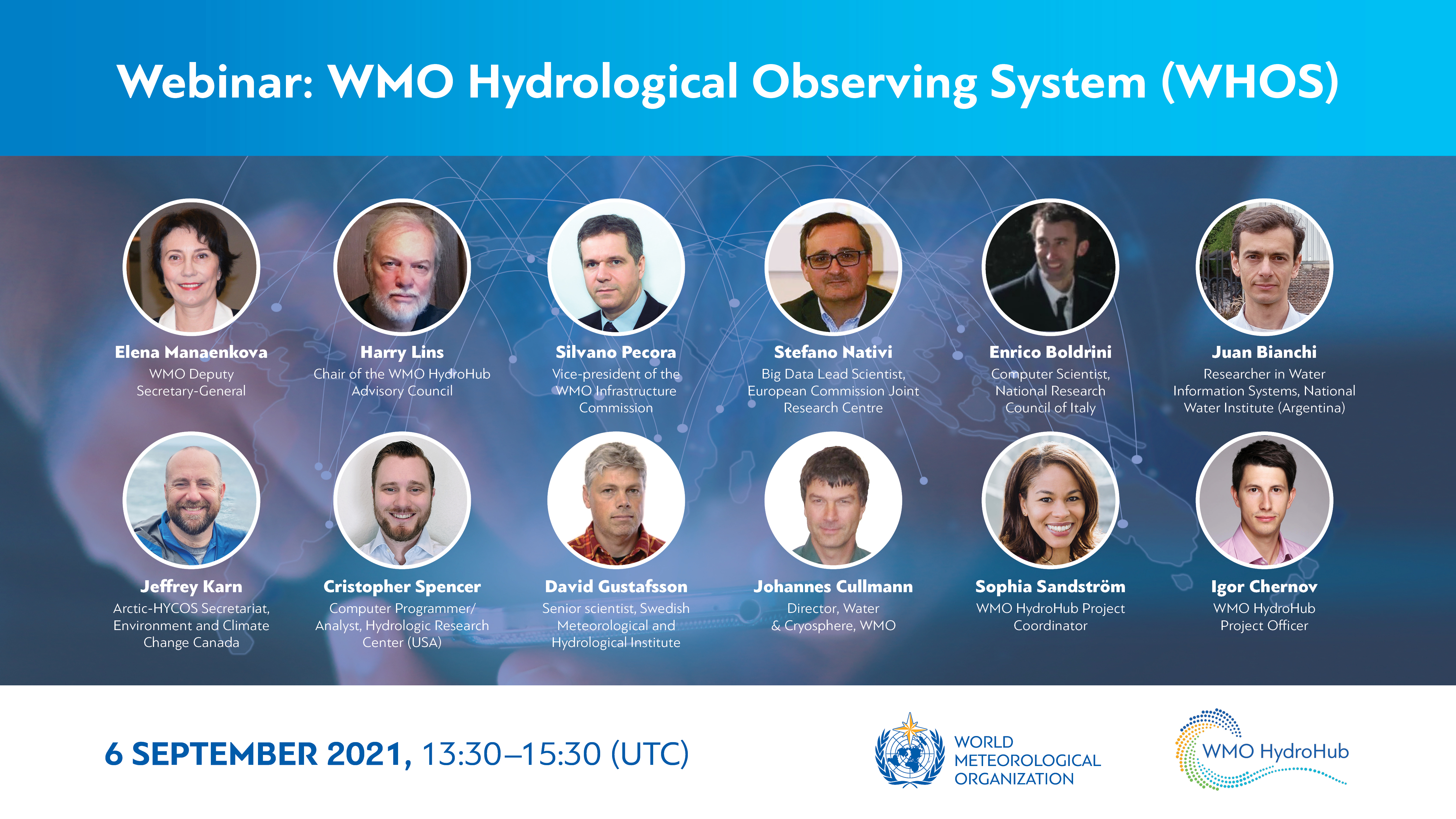Watch the recording of the WHOS webinar
On 6 September 2021, we held a webinar on the WMO Hydrological Observing System (WHOS). The recording is now available to watch.
Topics covered
00:11:52 WMO HydroHub
00:16:51 Importance of data interoperability (Presentation.pdf)
00:27:24 Introduction – WHOS as a hydrological contribution to WIS/WIGOS (Presentation.pdf)
00:40:33 Discovery and Access Broker technology (Presentation.pdf)
00:53:08 WHOS Community site and Web Portals
01:01:50 WHOS implementation in the La Plata basin (Presentation.pdf)
01:11:08 WHOS implementation in the Arctic basin (Presentation.pdf)
01:19:59 Leveraging the WHOS Plata Broker (Presentation.pdf)
01:25:18 Arctic hydrological modelling and data assimilation (Presentation.pdf)
01:36:48 Questions & Answers
Q&A chat
How is the system adaptable to the national system? Does it require special configurations?
WHOS can be applied at a national scale to improve the interoperability of the original data system maintained by the NHS. In WHOS, you can define a "view" with an endpoint linking only the selected observations at the national scale. At the same time, without any data duplication, the same observations can be part of other "views" for different datasets with the aim of facilitating data discovery.
Is it possible to download the shapefiles of data locations?
Data locations can be downloaded through many different service interfaces, including ArcGIS Feature Service. Using that specific standard, a JSON file will be generated. Shapefile can be easily added as an additional supported format, please follow up on your request by using the contact form available on the WHOS Community site.
What is the scale of data collection (in terms of size of river)?
WHOS supports different scales: local, national, regional and global.
What are the latest techniques adopted to share early warning systems on extreme flooding events to the local communities living in interior villages?
Outputs of early warning systems can be disseminated through WHOS to improve the dissemination and use by the facilities offered by the broker. For instance, we can support the use of an application for viewing or alerting even if the original data have not the specific format and service requested by the application itself; data format and service are supported by WHOS for the connection of the specific application.
Are there any publications we can access to read in more detail all the topics dealt in this webinar?
All related publications are available at the WHOS Community site.
Is it possible to have more details on the relationship between WHOS and WIS (WIGOS)?
WIGOS provides a framework for the integration and sharing of observational data. The implementation of WIGOS is focused on integrating governance and management mechanisms, functions and activities among the contributing systems. In this context, WHOS provides hydrological observations collected by NHSs; WHOS offers an appropriate description of data according to the WIGOS metadata profile. WMO Information System (WIS) supports data exchange as well as discovery, access and retrieval services. WHOS offers data formats and services for the connection of systems in WIS and sharing data.
Did I understand it correctly that WHOS sets up the connection between the provider and demand side? So the dataflow is not going through WHOS itself?
The dataflow actually goes through WHOS, which is responsible for mediation of data format and communication protocols from the ones implemented by the data provider and the ones required at the demand side. In addition WHOS-broker is also capable of augmenting (without supplant) data provider capabilities by means of simple transformations such as change of data format, subset, interpolation, ...
I have a question about the WHOS web services and supported tools. Do I understand correctly that if a client wants to get data from WHOS via web services it needs to connect to the different web services listed in the page depending on the type of data? Or any of the listed option would work?
Any listed option should work fine, the choice depends on the user/developer of the client application.

